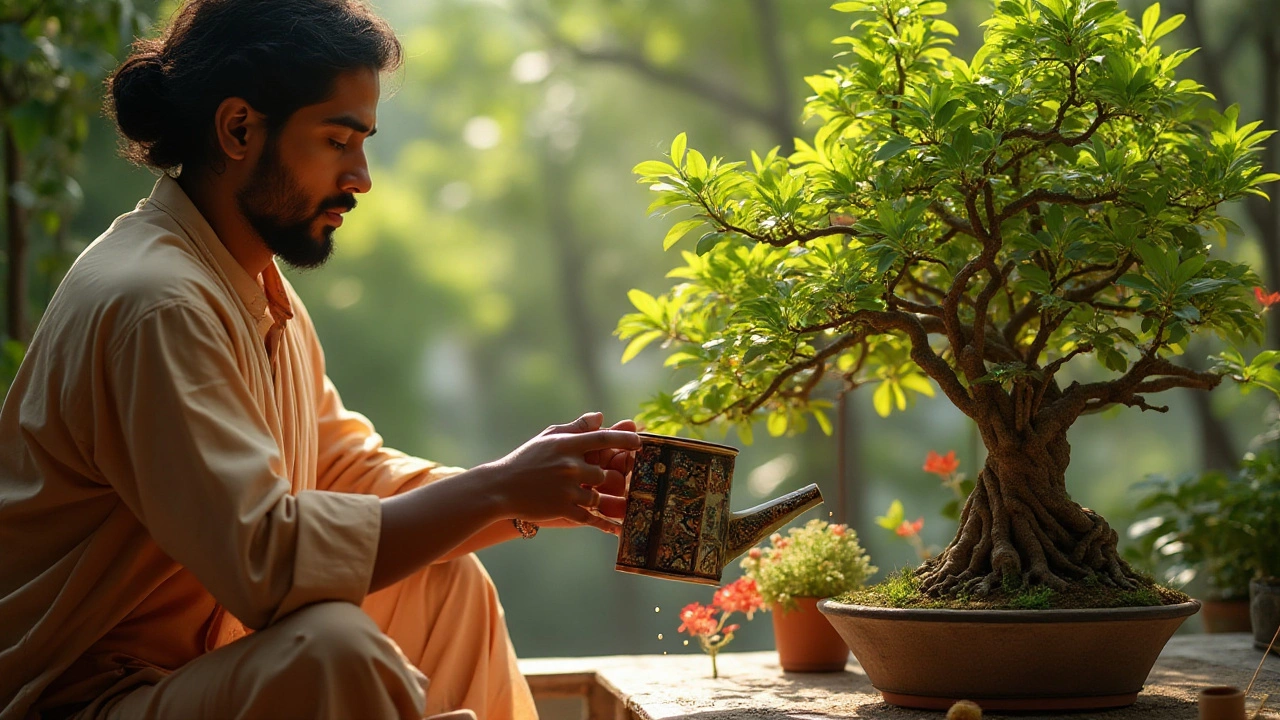Understanding the proper watering techniques for a bonsai tree is essential for its health and beauty. This article provides a comprehensive guide on how often to water your bonsai, taking into account factors such as species, climate, and container type. With practical tips and interesting facts, bonsai enthusiasts can refine their skills to ensure their miniature trees thrive. Discover the art of bonsai watering and achieve a lush, vibrant display.
Watering Tips for Indian Gardens: Smart Ways to Keep Plants Healthy
When it comes to watering tips, the right way to give water to plants so they grow strong without waste or damage. Also known as plant hydration strategies, it’s not just about pouring water—it’s about timing, amount, and method. In India’s varied climate, from dry summers in Rajasthan to monsoon floods in Kerala, watering the same way everywhere kills more plants than it helps.
Many gardeners think more water means healthier plants. But overwatering, giving plants too much water, which leads to root rot and fungal diseases is the #1 cause of indoor and balcony plant deaths here. You don’t need to water daily. Most plants in pots or gardens do better with deep, infrequent soaking. That means water until the soil is wet 4-6 inches down, then wait until the top inch dries out. This encourages roots to grow deeper, making plants tougher during heatwaves.
drip irrigation, a system that delivers water slowly and directly to plant roots through tubes and emitters is a game-changer for Indian gardens. It cuts water use by up to 60% compared to hoses or buckets. It’s perfect for balcony gardens, kitchen plots, or small farms. But even the best drip system fails if emitters get clogged with dirt or algae—so cleaning them every few months matters. If you’re not using drip yet, start with one plant. Run a tube from a bucket with a slow-flow valve. You’ll see the difference in weeks.
When you water matters just as much as how you water. Early morning is the sweet spot—before 9 a.m. That’s when the air is cool, the sun isn’t strong, and water soaks in before it evaporates. Watering at night? That’s asking for mold and pests. Watering at noon? You’re just heating up the water and losing half of it to evaporation. In cities like Delhi or Bangalore, where dust builds up on leaves, a quick mist in the morning also helps plants breathe better.
Soil type changes everything. Clay soil holds water too long—you might only need to water once a week. Sandy soil drains fast—you might need to water every 2-3 days. If your soil feels like cement, mix in compost or leaf mold. If it’s like sand, add coco peat or vermicompost. You don’t need fancy tools. Just dig a small hole after watering. If the soil is dry 2 inches down, it’s time. If it’s still wet, wait.
And don’t forget the plants themselves. A basil plant on your balcony needs more frequent water than a succulent. A tomato plant in full sun needs more than a fern in shade. Watch the leaves. Drooping in the afternoon? Might just be heat stress. Drooping at 7 a.m.? That’s a cry for water. Yellowing leaves? Could be overwatering. The plant tells you—if you learn to listen.
Below, you’ll find real stories from Indian gardeners who fixed their watering habits—and saved their plants. From fixing clogged drip lines to choosing the right pots for monsoon season, these posts cut through the noise. No fluff. No myths. Just what works in Indian homes, balconies, and farms.
